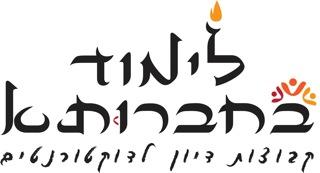17.01.2023 - מפגש שני: מלאכת הפירוש
במפגש השני הבטנו במלאכת הפירוש והמחקר הפילולוגיים ממבט על - מה הם השלבים ההכרחיים, ומהו הסדר הנכון שלהם? איתי קגן הציג ניסוח מופשט שלו לשתי מתודולוגיות הנוהגות בפועל במדעי היהדות, בצורת תרשימי זרימה היררכיים: השיטה הממוקדת אובייקט (המבוססת על מימרת 'על שלושה דברים כל עיון פילולוגי-היסטורי עומד' של אליעזר שמשון רוזנטל ז"ל מן החוג לתלמוד), והשיטה הממוקדת סובייקט (המבוססת על טכניקת 'השאלות המעצבנות' של ברוך שוורץ מן החוג למקרא). הוא טען כי שתי השיטות אינן סותרות, אלא משלימות, ושלכל אחת יש מקום וזמן. את שתיהן יחדיו הוא הנגיד לפרקטיקות קריאה לא מדעיות ולניסוחים מתודולוגיים אחרים של קריאה פילולוגית או של דיסציפלינות אחרות.
לאחר הדיון בשיטות השונות, ביתרונות ובחסרונות של כל אחת, שמענו ניתוח וביקורת על שני מאמרים במדעי היהדות: יונתן האורד דיבר על מאמר של ברוך שוורץ על המקורות והעריכה של דברים לא, ועמד על השימוש הסלקטיבי שהוא עושה בעדויות נוסח ובמסורות לשון שאינן נוסח המסורה הטברני, וזאת כדי לפתור בעיות פרשניות שאינן נפתרות באמצעות החלוקה לתעודות (=שיטת 'השאלות המעצבנות'), בשעה שקרין פינסטרבוש במאמרה על אותו הפרק באה להסביר ולמצות את מכלול עדי הנוסח לפרק. לאחריו אלון ברנד דן במאמר של שלמה נאה על סוגיית 'יש אם למקרא' מן התלמוד הבבלי והמקבילה שלה בספרא, והראה איך המהלך נבנה באופן יסודי על מיצוי חילופי הנוסח והצורות הלשוניות (=שיטת 'על שלושה דברים'), אך בשל ההנחה כי כתב היד וטיקן 66 של הספרא משקף את הנוסח המקורי, הוא בונה חלק משמעותי מפירושו על נוסח יחידאי ומחוק בכתב יד זה, שאפשר להסבירו בנקל כטעות סופר קלה ונפוצה.
Second session: Hermeneutical approaches
In the second session, we took a bird's eye view of philological interpretation and hermeneutics - what are the necessary steps, and what is their correct order? Itai Kagan presented abstract formulations of two methodologies that are practiced in Jewish studies, in the form of hierarchical flow charts: the object-centered method (based on the saying 'On three things every philological-historical study stands' by the late Eliezer Shimshon Rosenthal from the Department of Talmud), and the subject-centered method (based on the 'annoying questions' technique of Baruch Schwartz of the Bible department). He claimed that the two methods are not contradictory, but complementary, and that each has its place and time. Both methods were contrasted with non-academic reading practices and other methodological formulations in philology or in other disciplines.
After discussing the advantages and disadvantages of the different methods, we heard an analysis and critique of two Jewish studies articles: Jonathan Howard presented a paper by Baruch Schwartz on the sources and redaction of Deuteronomy 31, while noting his selective use of non-Masoretic textual and linguistic evidence in order to solve exegetical problems not accounted for by the Documentary Hypothesis (=the 'annoying questions' method), as opposed to Karin Finsterbusch's article on the same chapter which attempts to exhaustively account for the different readings of the textual witnesses. Next, Alon Brand discussed Shlomo Naeh's article on 'yesh em lamiqra' from the Babylonian Talmud and its equivalent in the Sifra, and showed how the argument was built on exhausting the textual variants and linguistic forms (=the 'on three things' method), but due to the assumption that MS Vatican 66 of the Sifra reflects the original text, builds a significant part of the interpretation on an idiosyncratic erased word in this manuscript, which can easily be explained as a minor and common scribal error.


